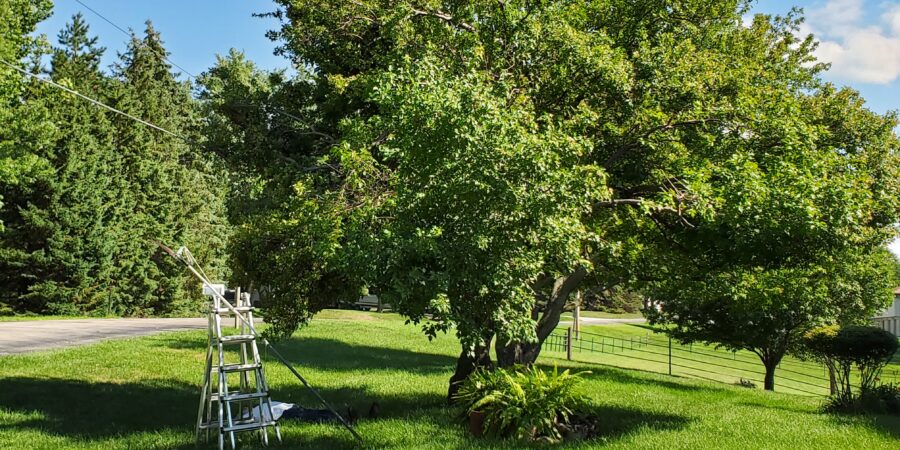Both Bill and Bob had tree damage last night, 07.11, and both pretty much cleaned up their yards before beginning to cut away tree limbs that were still hanging. Bill used an aluminum ladder and long fiberglass tree saw pole to cut away damaged limbs, and then went over to Bob’s house to help. This is what he found, stepping back momentarily to take the picture before beginning CPR (don’t bother – it only works 7% of the time, not like on TV.)
.
Bob was using a metal extension on his saw, and reached way up for the first limb (it was probably quicker that way).
.
Hard to see in this picture (because the WordPress software clips top and bottom of the pic) is the high voltage wire, 7,500 Volts worth, touching a branch near the top of the tree. Especially when it’s wet, tree wood acts as a resistive voltage divider. With 7.5kV at the 21 ft point, the voltage divider gives you over 300V per foot of tree wood. Merely leaning your hand on the trunk at the 5 ft point gets you a 1500V tickle. If it’s damp, the current can be more than a tickle.
.
Depending on the residential situation wires can be arranged in various ways. In this case, 7.5kV for the top wire; much less – near zero for the next one down, and then the coax supported by a steel cable below that, usually at zero Volts except for the inner conductor which may be at 90V.
.
Me? I’m not going near the trees out front until I get a better look at what they’re touching, and certainly not going to walk underneath the low hanging leaves and branches.
.
We’ll get Bill and Bob’s callsigns after we get back from the hospital.

Voltage Divider
News / Wednesday, July 12th, 2023